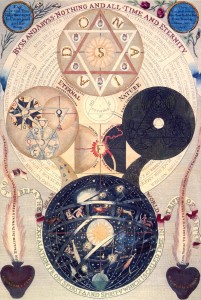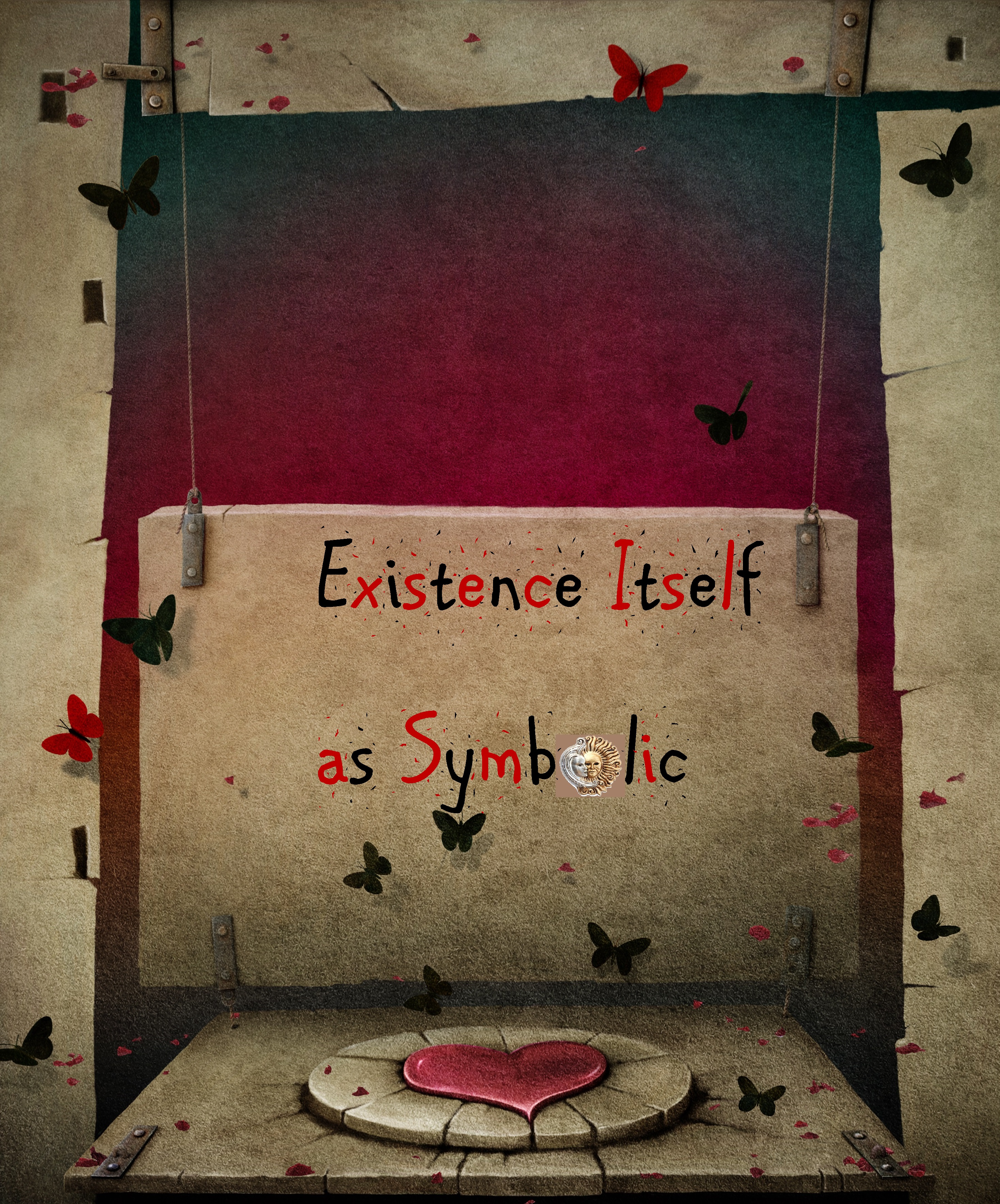
At times, one can marvel at the sheer scope of archaeological treasures that have come to light in the last few centuries–the discovery of the Valley of the Kings in Egypt, the excavation of ancient cities like Troy, Cnossos, Pompeii and Herculaneum, and the unearthing of important historical artefacts like the Tarim mummies, the Turin Shroud and the Dead Sea Scrolls. Once in a while, the discoveries themselves are entirely accidental and unprecedented. To give an example, in December of 1945ce, two brothers scampering about the mountain Jabel al-Tarif in Upper Egypt in search of a nitrate-rich soil called sabakh stumbled upon an old earthenware jar. At first their superstitious inclinations thwarted their will to probe further but the promise of a reward, perhaps the discovery of gold or precious stones, quickly won out and they smashed it upon with a mattock. To their dismay, there was no treasure to be had; there was only what at first appeared to be a worthless cache of thirteen papyrus scrolls. Who’d ever want those? Unperturbed by their lack of providence, the boys hauled the jar home and showed its contents to their mother, who, being just as oblivious of the historical importance of the papyrological codices as her sons were, used up the first three as fuel for her oven.
Then, for reasons which would evoke nausea and abomination in the vast majority of civilised readers, the family were forced to part with their booty and all but one of the remaining leather-bound books changed hands a number of times before being seized by the Coptic Museum in Cairo. The other embarked on a worldly adventure of its own. It was smuggled out of the country surreptitiously, and came to rest at the Jung Foundation in Zurich after illegitimate attempts to sell the manuscript through the black market proved fruitless. There, the manuscript caught the eye of a widely respected Dutch professor by the name of Gilles Quispel, who identified the script as Coptic and proceeded to translate a section of text which read: “These are the secret words which the living Jesus spoke, and which the twin Judas Thomas, wrote down.” (Pagels, 1989, xiii-xv) Quispel was adroit enough to realise that the document was merely a spark, a fragment of a far greater and far- reaching religious phenomenon which had remained latent until now, and he dutifully published his finds in an attempt to attract the attention of scholars or literati in conscious or unconscious possession of other pivotal fragments. In the end he hit the jackpot, for it wasn’t long before the other nine leather-bound books, now under the auspices of the Egyptian government, were identified as homologous cousins. Hence the manuscript began a joyous pilgrimage back to its country of origin, Egypt, eventually finding a permanent home with the other nine codices in Cairo.
After some deliberation on the part of academics, archaeologists and historians, a decision was made to name these codices–an assortment of fifty-two texts and forty-six different works of mythological, apocalyptic and polemical nature–the Naq Hammidi Codex, more commonly known as the Naq Hammidi Library. The thirteen codices and their individual tractates were then enumerated for scholarly reference. Written in three languages–Greek, Coptic Egyptian and Jewish–the texts themselves betray the existence of a heterogeneous assortment of religious communities that called themselves Gnostics and believed that had access to revelatory, spiritual insights known as Gnosis, or “the Gnosis falsely so called” by their pejorative detractors. There can be no doubt that the Gnostic movement was variegated and broad, thriving along the eastern Mediterranean basin for at least four centuries.
The religion’s most influential advocates were the Samaritan magician Simon Magus and the emanationist Basiliades, both of whom were assiduous, unrelenting and dogged in their determination to spread what they perceived to be the true ‘light’. Given that the respective cult centres of the aforementioned advocates were Syria and Alexandria in Egypt, it should come as no surprise to learn that the mythological notes of the Gnostic religion were at their sharpest and most reverberant there. And, as we shall soon see, the mythological tradition which underpinned Gnostic cosmogony was especially rich in symbolism and meaning. The intervals, chords and musical scales formed by the notes of the Gnostic religion were extremely complex and multifarious in nature, and deceptively so, for what we see in codices like the Apocryphal of John, the Hypostasis of the Archons, the Gospel of the Egyptians and On the Origin of the World is that while there may be differences in the concrete details of each text, they all seem to revolve around the same harmony, the same mythological totem pole.
There’s ample evidence to support the notion that the Gnostics did a fair bit of borrowing from other religious and philosophical traditions. The idea of God’s absolute transcendence, the division of the cosmos into seven realms with gates guarded by hostile daemons, the cosmic polarities of Absolute Spirit and Absolute Matter, the ascent and descent of incarnating or reincarnating souls along the wrungs of the cosmic ladder, as well as a host of other eschatological concepts all have their origin in Neopythagorean and Neoplatonic thought. For the Gnostics, the divine realm in which the ethereal fire burned eternal was called the Pleroma. God, the wholly unintelligible and incomprehensible transcendent being that could only be described through negative theology, filled this space in its entirety. He had existed for time immemorial, bound up in a blissful state until the first rumination, which unravelled as he hovered over the primordial waters and caught sight of his own reflection. This first cogitation incited an awareness of his own ineffable nature and anatomy, a phenomenon which birthed the spiritual and material aeons.
Here, aeons might be described as divine attributes but they are also dimensional whirls of time and space. His brooding above the primordial chaos caused ripples, which radiated outwards and gave life to a disembodied female entity known as Ennoia, or Thought. Some of the mythological treatises call this being Barbelo. Her subsequent union with the divine father, called Bythos, yields supernal Light in the form of Christ. Thus we have arrived at the original trinity of Father, Mother and Son before the ecclesiastical leaders jettisoned the Great Mother from the realm of pure, undefiled spirit and replaced her with a neutral entity in the Holy Spirit. According to Christian Gnostic theologian Valentinus, the first cogitation produced four divine couples or “syzygies”. In the divine order, Bythos (Depth) and his female equivalent Ennoia (Thought) were immediately followed by the male-female pairings of Nous (Mind) and Aletheia (Truth), Logos (Word) and Zoe (Life), and finally Anthropos (Man) and Ecclesia (the Church). This part of the Gnostic myth bears a striking resemblance to the Hermopolitan Ogdoad of Egyptian creation myth where four pairs of frog-headed gods and serpent-headed goddesses–Nun and Naunet, Amun and Amaunet, Huh and Hauhet, Kuk and Kauket–are the first paraphysical beings to emerge from the primeval ocean and carve up the universe with their knives.
The last of the aeons to differentiate from the primordial soup was a wholly feminine spirit called Pistis-Sophia. Just like her name suggests, Sophia was steadfast in faith when it came to her sagacious father Bythos. In fact, her love for him was such that she wished to imitate his first cogitation and in doing so caused a fatal schism in the Pleroma. Her mistake not only served as a prelude for the creation of the material aeons, but contextualised the chief reason as to why the Gnostics considered created Nature to be evil, fallen and accursed. In any case Pistis-Sophia’s brooding over the primordial waters of chaos met with disastrous consequences, for in doing so she created a travesty of a being, a horribly malformed and blemished demon with scaly skin, a feline snout and reptilian eyes of fire. She ascribed to him the name of Yaldabaoth, meaning “Son of Chaos.” The Gnostics equated this being with the biblical creator. Regrettably, Sophia’s autogenerated son wasn’t anything sublime or worthy of writing home about; the surliness of his physical anatomy was rivalled only by an equally vile disposition. He was corrupt, conceited and brimmed with illusions of grandeur. Mortified with this misshapen fruit that was but an innocent error in judgement, Sophia expelled him from the Pleroma in an act of repentance that brings to mind Hera’s hurling of the ugly, deformed Hephaestus from the cliffs of Olympus. Here, it might be worth mentioning that the Valentinian sect of Gnostics wished to restore dignity to the matriarchate by spiritualising the fall of Sophia, in other words positing that her tragic mistake was merely an error in judgement, though in hindsight this modification of biblical scripture did very little in lifting the blame from the shoulders of the matriarchate given that it was still a female entity that had instigated the doomsday enterprise to begin with.
Being a child of Pistis-Sophia and thus of the ethereal fire known as the Pleroma, Yaldabaoth retained some memory of how to engage creation ex nihilo, and, oblivious and unperturbed by his mother’s ultimate rejection, projected himself over the primordial waters to bring forth a host of other dimensions. Using the misshapen fingers of his imagination, he began by moulding a realm of fixed stars and zodiacal constellations. Then he stretched out his creation like an elastic chord, making it dense and some parts and opaque in others. These were none other than the seven planetary spheres interconnected by dimensional portals and guarded by malevolently-deposed angels. Hovering over the condensed end of his multidimensional aeon, Yaldabaoth scooped up quantities of fire, air, water and earth from the prima materia and mixed them together like a painter experimenting with the visual effects of different colour tones. The differing proportions and quantities which he came up with set the dark shadows of the material universe into motion.
Yaldaboath intended to endow his creation with a horde of much finer details, but before he could do so his mother, now bent on shattering his illusion of cosmic supremacy, projected herself from the Pleroma to utter a spine-chilling prophecy: “There is an immortal man of light (Jesus) who has been in existence before you and who will appear among your modelled forms; he will trample you to scorn just as a potter’s clay is pounded. And you will descend to your mother, the abyss, along with those that belong to you”. Distressed at this, the existence of spiritual beings far older, more knowledgeable, intelligent and supernal than he, the haughty Yaldabaoth gathered his demonic minions to conspire on how the just heard premonition might best be thwarted. They mixed handfuls of earth with their own semen and fashioned the wad into a shape that corresponded with their own distorted conceptions of what the luminous spirit of Christ might look like in the flesh, hoping that the material body would attract its spiritual counterpart from the Pleroma and propitiate the displeasure of the divine beings above. The clay body moulded by the daemons of the material aeons, three hundred and sixty of them in all, was none other than the human being, and the endeavour was supposed to conjure emotional attachment on the part of the higher authorities for Yaldabaoth’s material deeds, which of course it didn’t.
In hindsight, there was absolutely no way that Yaldabaoth and his minions could trick Pistis-Sophia or any of the other transcendental beings ruminating in the Pleroma, seeing that beings on the higher echelons of the cosmic order were all-encompassing and all-omniscient. To counter their duplicity, Pistis-Sophia entered the enchanting Garden of Eden created by the lower authorities in the guise of Pistis-Zoe, and, projecting a droplet of ethereal light from her mercurial body onto the ground, proceeded to fashion a female body and then infuse it with a hermaphroditic spirit which she called Eve of Zoe, or Eve of Life. During this time Yaldabaoth and his minions had already come to realise the futility of their venture and deserted their own illegitimately created being in Adam or Adamas, leaving him to the ravages of wind and water. It wasn’t long before Eve of Zoe stumbled upon his lifeless corpse in the garden. Overwhelmed by a deep sense of grief and pity for her male counterpart, she breathed the divine spark into him with the help of her mother, Pistis-Zoe. “Adam!” she screamed with heartfelt emotion, “Become alive! Rise upon the earth!” The divine element moved within Adam like a slithering serpent and imbued him with life.
Intuition made it clear to her that Yaldaboath and his minions would stand resolute in their attempts to corrupt humanity, and so after leaving an ethereal double of her likeness in the company of Adam, she infused herself into the Tree of Knowledge of Good and Evil, also called the Tree of Gnosis, which stood at the exact centre of Eden. From here she could foil their imminent machinations by tempting human beings to taste of the tree’s fruit; in turn, the fruit’s magical seed would induce within its mortal recipient a mental state of receptivity conductive to the acquisition of gnosis, spiritual knowledge which dispelled ignorance and awakened one to the inherent understanding that divine particles or soul-sparks originated from the ethereal fire, from the Pleroma itself.
So, what is the unknown learned writer of On the Origin of the World actually telling us? No doubt he or she is inferring that our inner selves are in urgent need of salvation through gnosis or salvific knowledge, and, if we were to adhere strictly to the Gnostic viewpoint, that a wholly feminine spirit will impart it.
I will conclude today’s post with a poem on the Gnostic religion.
An Act of Creation
Who dares to claim the path to Gnosis
was the most prized of our Lord’s secret teaching
as alternate realms shall quickly infer
an age-old sphere of life-after-death preaching.
A few crumbling codices found at Nag Hammidi
once imparted knowledge to a few good apostles;
now they find voice two thousand years after
being supplanted by four canonical Gospels.
How might one reconcile the jealous and angry
two-faced God of the Old Jewish Testament
to fit smugly into the mould of the all-loving One
posed by Christ for all the world’s betterment?
Escape to a far dimension of the opaque universe,
inject it with vibrations of light and song
and let Pistis-Sophia experience Creation
by carbon copying its genetic sequence all wrong.
This Yaldabaoth, a pale and flawed reflection
of the flower-of-life’s geometrically-sound plan,
brags of virility, then breeds she-devils to birth
Archons and a gullible creature called Man.
Unable to walk or talk the primeval He
is an aberrant echo of the divine act unfurled;
Zephyrus then blew Sophia’s light into our lives
but her spark fell inert in the material world.
The earth, deceptive like her mortal master
hid her scales with quicksand and tree sap.
When the goddess plunged down to rescue the race
her gold-tinted cloth became caught in this trap.
All God’s sons were then saved upon a sexless union
which carried along the whole Christian fate,
stripping the gallant knight of one-dimensional
armour and the weight of his ignorant state.
Only then did Sophia make her Second Coming
hissing like a serpent to hinder evil volition,
by urging Adam’s firstborn to bite the apple
and outwit Yahweh through sheer intuition.









